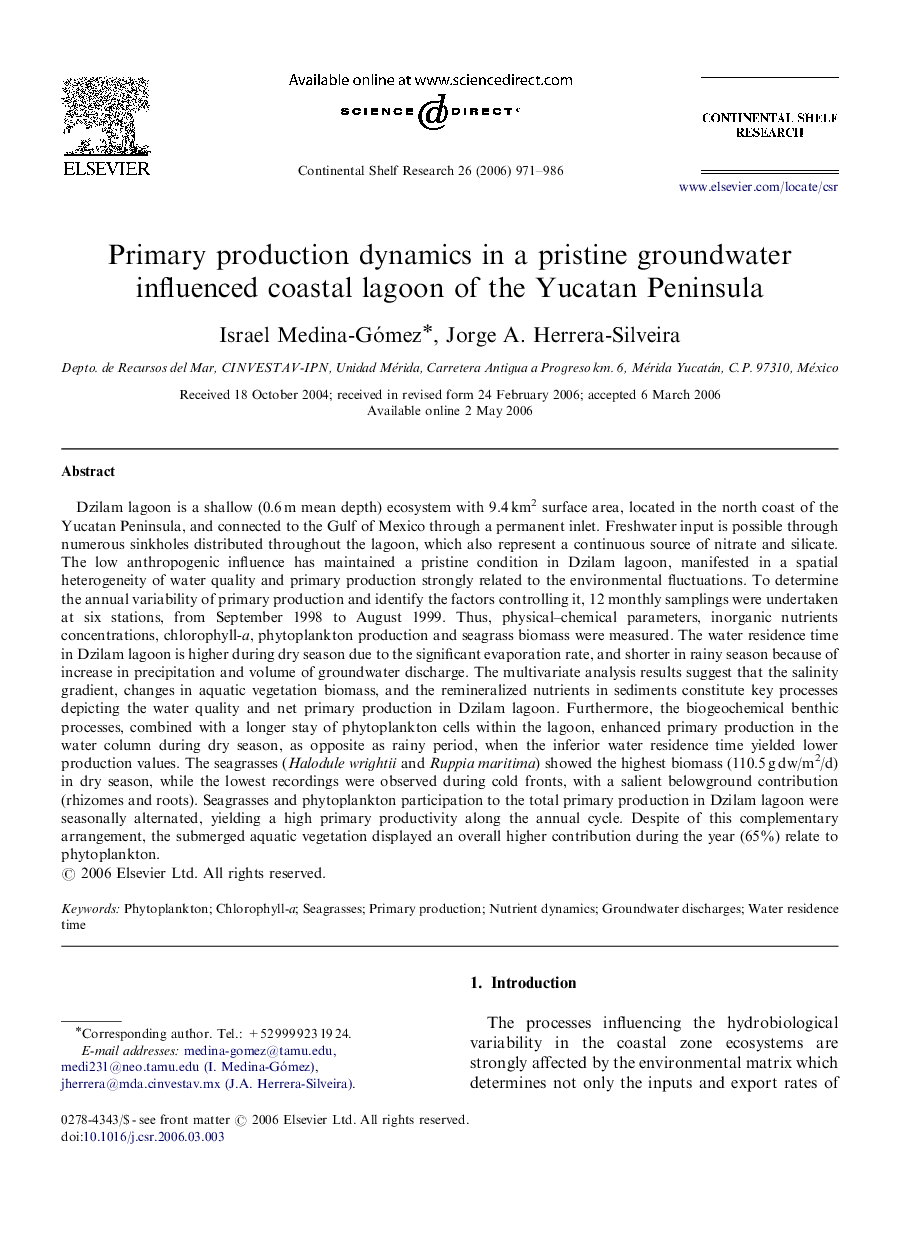| Article ID | Journal | Published Year | Pages | File Type |
|---|---|---|---|---|
| 4534047 | Continental Shelf Research | 2006 | 16 Pages |
Dzilam lagoon is a shallow (0.6 m mean depth) ecosystem with 9.4 km2 surface area, located in the north coast of the Yucatan Peninsula, and connected to the Gulf of Mexico through a permanent inlet. Freshwater input is possible through numerous sinkholes distributed throughout the lagoon, which also represent a continuous source of nitrate and silicate. The low anthropogenic influence has maintained a pristine condition in Dzilam lagoon, manifested in a spatial heterogeneity of water quality and primary production strongly related to the environmental fluctuations. To determine the annual variability of primary production and identify the factors controlling it, 12 monthly samplings were undertaken at six stations, from September 1998 to August 1999. Thus, physical–chemical parameters, inorganic nutrients concentrations, chlorophyll-a, phytoplankton production and seagrass biomass were measured. The water residence time in Dzilam lagoon is higher during dry season due to the significant evaporation rate, and shorter in rainy season because of increase in precipitation and volume of groundwater discharge. The multivariate analysis results suggest that the salinity gradient, changes in aquatic vegetation biomass, and the remineralized nutrients in sediments constitute key processes depicting the water quality and net primary production in Dzilam lagoon. Furthermore, the biogeochemical benthic processes, combined with a longer stay of phytoplankton cells within the lagoon, enhanced primary production in the water column during dry season, as opposite as rainy period, when the inferior water residence time yielded lower production values. The seagrasses (Halodule wrightii and Ruppia maritima) showed the highest biomass (110.5 g dw/m2/d) in dry season, while the lowest recordings were observed during cold fronts, with a salient belowground contribution (rhizomes and roots). Seagrasses and phytoplankton participation to the total primary production in Dzilam lagoon were seasonally alternated, yielding a high primary productivity along the annual cycle. Despite of this complementary arrangement, the submerged aquatic vegetation displayed an overall higher contribution during the year (65%) relate to phytoplankton.
